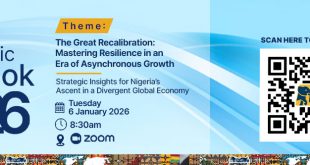
The National Bureau of Statistics (NBS) says Nigeria’s unemployment rate increased to 5.3 percent in the first quarter (Q1) of 2024.
In a report on Tuesday, NBS said the unemployment rate increased compared to the 5 percent recorded in Q3 2023.
NBS defined the unemployment rate as the share of the labour force (the combination of unemployed and employed people) who are not employed but actively searching and are available for work.
“The unemployment rate for Q1 2024 was 5.3%, showing an increase from 5.0% recorded in Q3 2023,” NBS said.
“The unemployment rate among males was 4.3% and 6.2% among females.
“By place of residence, the unemployment rate was 6.0% in urban areas and 4.3% in rural areas for Q1 2024.”
For youth, the unemployment rate dropped to 8.4 percent in Q1 2024, down from 8.6 percent in Q3 2023.
The bureau’s report indicates that unemployment by educational attainment in Q1 2024 was 2.0 percent among individuals with postgraduate education, 9.0 percent for post-secondary education, 6.9 percent for secondary education, and 4.0 percent for individuals with only primary education.
EMPLOYMENT RATE DROPS TO 73.2%
According to the report, Nigeria’s employment-to-population ratio, a key workforce participation measure, declined in the first quarter of 2024.
The ratio, which represents the percentage of the employed working-age population, fell to 73.2 percent, a drop from the 75.6 percent recorded in the third quarter of 2023.
“In Q1 2024, 73.2% of Nigeria’s working-age population was employed, down from 75.6% in Q3 2023,” NBS said.
“Disaggregating by sex, the employment-to-population ratio was 74.2% for males and 72.3% for females in Q1 2024.
“Additionally, the employment-to-population ratio in urban areas was 69.5% and 78.9% in rural areas in Q1 2024.
“This is a decrease in the ratio compared to the 71.1% and 80.7% in Q3 2023, respectively.”
SELF-EMPLOYMENT DROPS TO 84%
The report further shows that Nigeria’s labour market saw a notable shift as the proportion of self-employed individuals continues to decline.
In Q1 2024, self-employment accounted for 84 percent of the workforce, down from 86 percent in the same period the previous year.
This marks a gradual transition from self-employment to more formal employment opportunities.
According to the NBS, employment is divided into two categories: employees and the self-employed.
Self-employed workers are individuals working on their own account, often with family assistance, and without engaging continuous employees.
On the other hand, employees are those receiving salaries or wages, including paid apprentices.
“The proportion of persons in self-employment declined from 86% in Q1 2023 to 84% in Q1 2024,” the bureau said.
“Survey findings reveal an increase in the share of employed persons primarily engaged as employees between Q1 2024 (16.0%) and Q3 2023(12.7%).
“The self-employment rate among females was 87.9% while males was 79.9%.”
NBS report on disaggregation by place of residence showed the rate of self-employed persons in rural areas was 91.9 percent and 78.2 percent in urban areas.
 DailyrecordNg …Nigeria's hottest news blog
DailyrecordNg …Nigeria's hottest news blog








